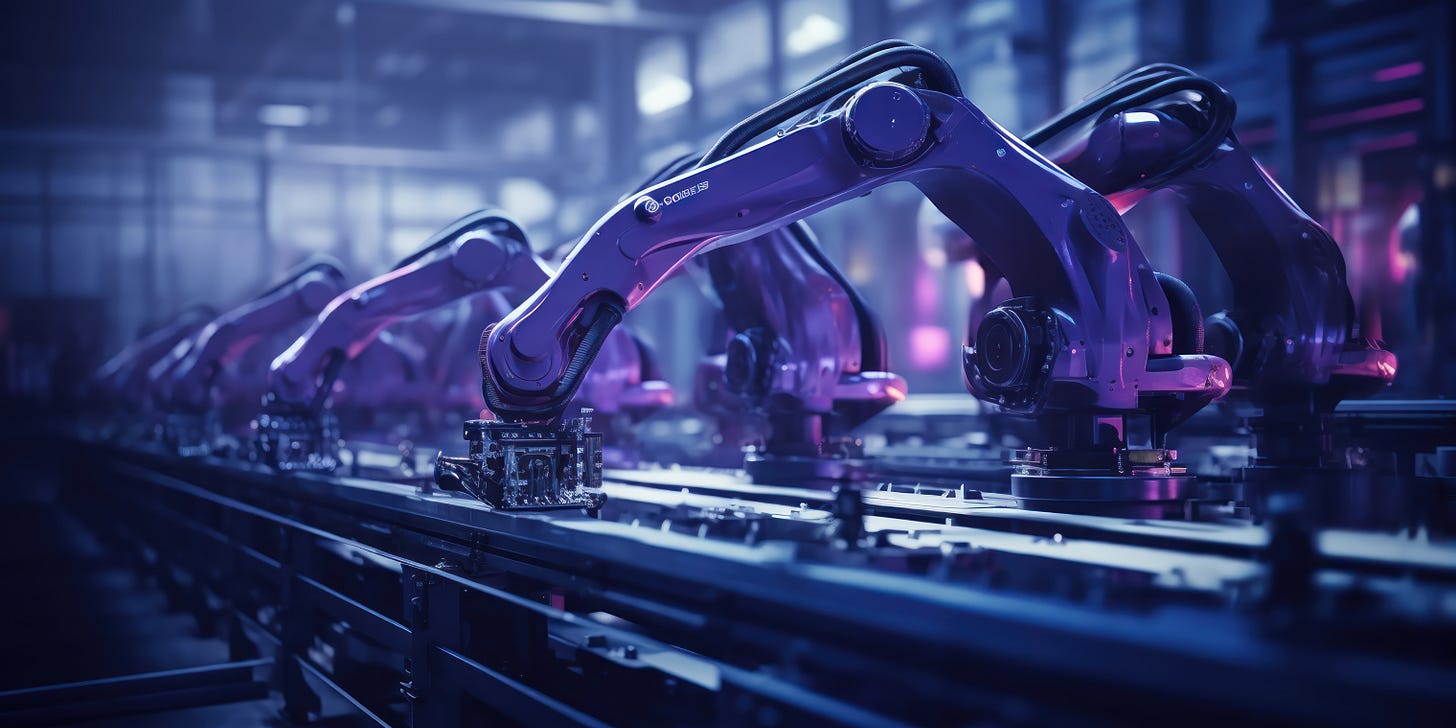🦾 The Evolution of AI in Industrial Robotics: From Automation to Autonomy
From streamlining production to self-optimizing systems, AI-powered robotics is not just automating industry—it’s revolutionizing it.
Introduction
Automation has revolutionized manufacturing over the past century, dramatically improving efficiency and productivity. From the early assembly lines in the 20th century to computerized automation with PLCs and robotics in the mid-20th century, technology has progressively taken over repetitive and hazardous tasks. Today, smart factories use Artificial Intelligence (AI), machine learning, and the Industrial Internet of Things (IIoT) to optimize operations in real time.
While automation has raised concerns about labor markets, it has made manufacturing safer, more cost-effective, and higher quality. However, human oversight remains essential to maintain balance and drive further innovation in this evolving landscape.
From Automation to Autonomy
Early automation systems in industrial robotics had limitations, often requiring manual programming and struggling to adapt to dynamic environments. AI has transformed the capabilities of these systems, moving robotics from basic automation to almost full autonomy. This shift enables robots to handle more complex tasks like dynamic path planning, real-time error detection, and predictive maintenance.
Autonomous robots can self-optimize, adjusting to changes on the production line without human intervention. And with recent advances in AI and machine learning, combined with declining robotics costs, manufacturing is on the cusp of a new era - one where machines can perform complex control functions autonomously, without prior programming or direct human operation.
The Road Ahead: Unlocking New Possibilities
As AI continues to advance, the potential for autonomous robots in industrial settings is expanding rapidly. Beyond automating repetitive tasks, AI-driven robots can now analyze vast amounts of data, learn from it, and make intelligent decisions without human input. This capability opens up new possibilities for precision, customization, and flexibility in manufacturing processes.

Furthermore, predictive maintenance powered by AI minimizes the risk of unexpected machine breakdowns, ensuring continuous operation and extending the lifespan of equipment, lowering maintenance costs but also increasing the overall reliability of manufacturing systems.
Looking ahead, the fusion of AI and robotics will likely reshape industries, enabling smarter supply chains, more resilient production systems, and greener manufacturing processes through energy optimization. Companies such as Siemens, IBM, and Intel are already using AI in manufacturing to improve productivity, automate operations, and enable predictive maintenance. While there are challenges to overcome, particularly around workforce adaptation, the benefits of AI-driven industrial autonomy are profound, offering companies more tools to thrive in a rapidly changing global economy than ever.
More on the subject:
Automation Challenges, Opportunities, and Planning Ahead - Since the start of automation, the workforce has had to transform and shift, adapting and upgrading their skills over time. And despite fears dating back one hundred years, automation has been responsible for creating one-third of all new jobs since then.
Trends in Automation and Robotics: An Industry Overview - The past few years have certainly seen some interesting development in the field of tech. Let’s delve into the trends that are shaping the future of robotics and automation.


